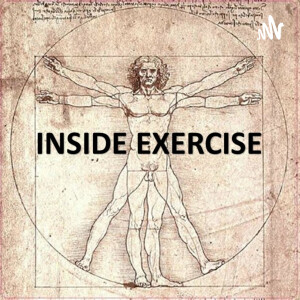
#85 - Effect of training load and shoes on running-related injuries with Dr Rasmus Østergaard Nielsen
 2024-05-27
2024-05-27
Dr Glenn McConell chats with Associate Professor Rasmus Østergaard Nielsen from Aarhus University who is an expert on the affect of training load and shoes on running-related injuries. This is the second of a series of podcast episodes on running injuries (See Prof Irene Davis’s episode).
Rasmus went from an overweight gamer to an injured runner to a exercise researcher! His research focuses on injury prevention, especially the importance of training load. Need to make slow changes. Seems don’t need motion control shoes for those with “excess pronation”. His main point is that one needs to give the body enough time to adapt or the likelihood of injury is increased. So don’t suddenly change things. This includes speed, distance, shoes, terrain etc. How gradual is gradual though? There tend to be different injuries from running long vs running fast (and when returning to running one should consider the cause of the original injury). What do in leisure time affects the total load. Shoes and running injuries. Very interesting stuff.
0:00. Introduction
3:05. Rasmus focuses on injury prevention
4:50. The importance of training load with injuries
8:10. Went from overweight gamer to runner to exercise researcher
15:12. “Excessive pronation” doesn’t increase injuries
20:20. If it ain’t broke, don’t fix it.
21:38. Injury rates
23:50. Don’t suddenly change things
25:00. Should increase 5-10% a week?
26:35. Injury from one session vs more chronic effects
30:20. Running speed, distance and load
32:40. Stride length and stride rate
36:00. Gradual changes are very important
40:08. Different injuries when run long vs fast
43:02. Don’t do too much too soon (change shoes, different terrain etc)
48:45. Generally the body can adapt if give it time
50:40. Might be good to have different shoes if used to them
53:50. How gradual is gradual though?
59:20. What do in leisure time affects the total load
1:02:27. Rearfoot vs forefoot strike and injuries
1:07:08. Evolution and running shoes, fan of minimalist shoes?
1:10:35. Training load needs to be considered in injury research
1:16:43. Quantifying load per stride etc
1:21:00. Recovery from injury (plantar fasciitis)
1:24:02. Shoes and running injuries
1:27:05. “Super shoes” and injury risk
1:28:48. Recovery from achilles tendon recovery
1:31:32. Running and knee osteoarthritis
1:33:53. Strength training and running injuries
1:39:00. Aging, stretching and running injuries
1:42:37. Sex differences and running injuries
1:44:23. Takeaway messages
1:46:26. Outro
Inside Exercise brings to you the who's who of research in exercise metabolism, exercise physiology and exercise’s effects on health. With scientific rigor, these researchers discuss popular exercise topics while providing practical strategies for all.
The interviewer, Emeritus Professor Glenn McConell, has an international research profile following 30 years of Exercise Metabolism research experience while at The University of Melbourne, Ball State University, Monash University, the University of Copenhagen and Victoria University.
He has published over 120 peer reviewed journal articles and recently edited an Exercise Metabolism eBook written by world experts on 17 different topics (https://link.springer.com/book/10.1007/978-3-030-94305-9).
Connect with Inside Exercise and Glenn McConell at:
Twitter: @Inside_exercise and @GlennMcConell1
Instagram: insideexercise
Facebook: Glenn McConell
LinkedIn: Glenn McConell https://www.linkedin.com/in/glenn-mcconell-83475460
ResearchGate: Glenn McConell
Email: glenn.mcconell@gmail.com
Subscribe to Inside exercise:
Spotify: shorturl.at/tyGHL
Apple Podcasts: shorturl.at/oFQRU
YouTube: https://www.youtube.com/@insideexercise
Anchor: https://anchor.fm/insideexercise
Google Podcasts: shorturl.at/bfhHI
Anchor: https://anchor.fm/insideexercise
Podcast Addict: https://podcastaddict.com/podcast/4025218
Not medical advice
More Episodes
 2022-06-23
2022-06-23
Create your
podcast in
minutes
- Full-featured podcast site
- Unlimited storage and bandwidth
- Comprehensive podcast stats
- Distribute to Apple Podcasts, Spotify, and more
- Make money with your podcast
It is Free
- Privacy Policy
- Cookie Policy
- Terms of Use
- Consent Preferences
- Copyright © 2015-2024 Podbean.com




